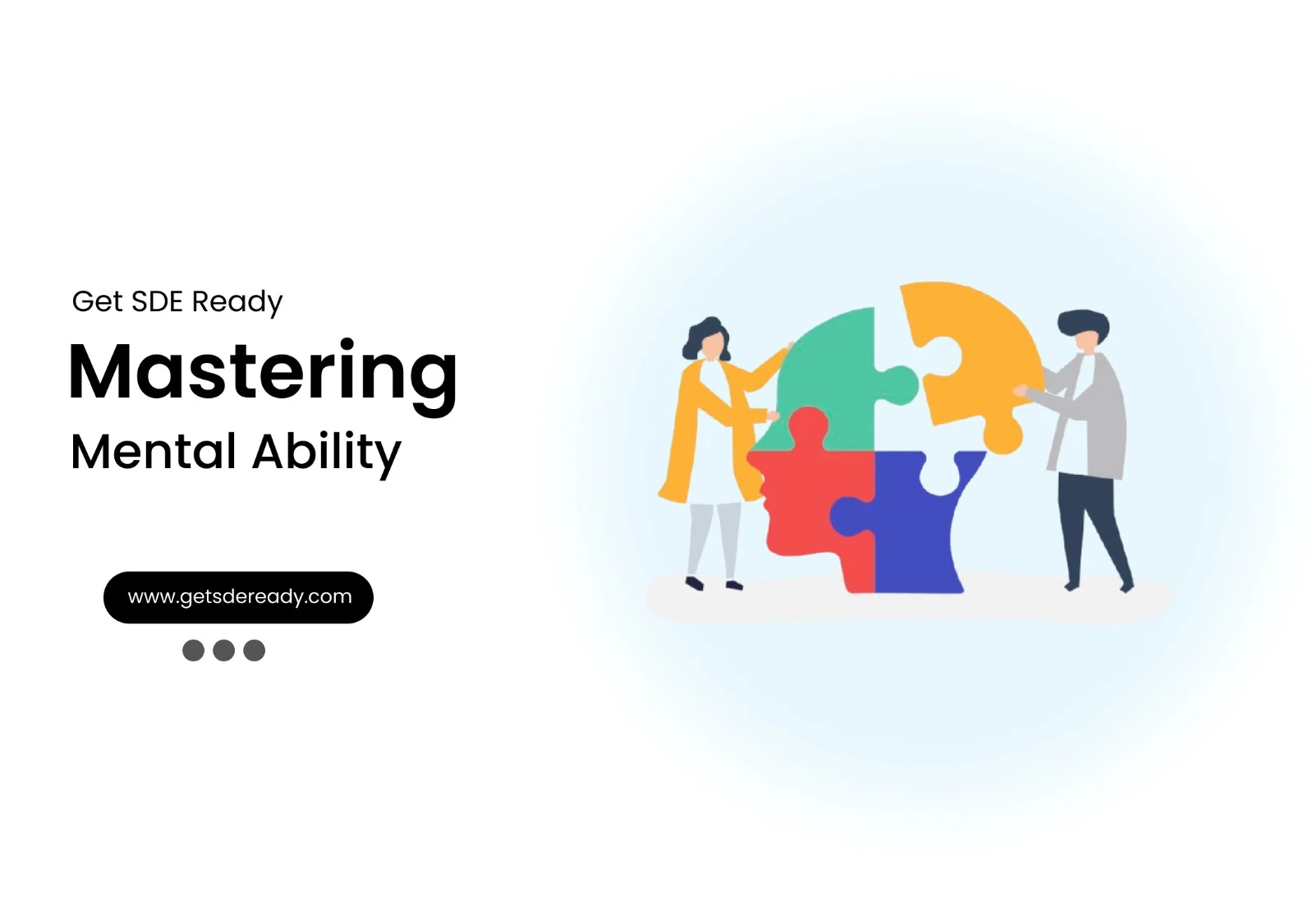Introduction to High-Level System Design
System Design Fundamentals
- Functional vs. Non-Functional Requirements
- Scalability, Availability, and Reliability
- Latency and Throughput Considerations
- Load Balancing Strategies
Architectural Patterns
- Monolithic vs. Microservices Architecture
- Layered Architecture
- Event-Driven Architecture
- Serverless Architecture
- Model-View-Controller (MVC) Pattern
- CQRS (Command Query Responsibility Segregation)
Scaling Strategies
- Vertical Scaling vs. Horizontal Scaling
- Sharding and Partitioning
- Data Replication and Consistency Models
- Load Balancing Strategies
- CDN and Edge Computing
Database Design in HLD
- SQL vs. NoSQL Databases
- CAP Theorem and its Impact on System Design
- Database Indexing and Query Optimization
- Database Sharding and Partitioning
- Replication Strategies
API Design and Communication
Caching Strategies
- Types of Caching
- Cache Invalidation Strategies
- Redis vs. Memcached
- Cache-Aside, Write-Through, and Write-Behind Strategies
Message Queues and Event-Driven Systems
- Kafka vs. RabbitMQ vs. SQS
- Pub-Sub vs. Point-to-Point Messaging
- Handling Asynchronous Workloads
- Eventual Consistency in Distributed Systems
Security in System Design
Observability and Monitoring
- Logging Strategies (ELK Stack, Prometheus, Grafana)
- API Security Best Practices
- Secure Data Storage and Access Control
- DDoS Protection and Rate Limiting
Real-World System Design Case Studies
- Distributed locking (Locking and its Types)
- Memory leaks and Out of memory issues
- HLD of YouTube
- HLD of WhatsApp
System Design Interview Questions
- Adobe System Design Interview Questions
- Top Atlassian System Design Interview Questions
- Top Amazon System Design Interview Questions
- Top Microsoft System Design Interview Questions
- Top Meta (Facebook) System Design Interview Questions
- Top Netflix System Design Interview Questions
- Top Uber System Design Interview Questions
- Top Google System Design Interview Questions
- Top Apple System Design Interview Questions
- Top Airbnb System Design Interview Questions
- Top 10 System Design Interview Questions
- Mobile App System Design Interview Questions
- Top 20 Stripe System Design Interview Questions
- Top Shopify System Design Interview Questions
- Top 20 System Design Interview Questions
- Top Advanced System Design Questions
- Most-Frequented System Design Questions in Big Tech Interviews
- What Interviewers Look for in System Design Questions
- Critical System Design Questions to Crack Any Tech Interview
- Top 20 API Design Questions for System Design Interviews
- Top 10 Steps to Create a System Design Portfolio for Developers
Data Structures and Algorithms
- Introduction to Data Structures and Algorithms
- Time and Space Complexity Analysis
- Big-O, Big-Theta, and Big-Omega Notations
- Recursion and Backtracking
- Divide and Conquer Algorithm
- Dynamic Programming: Memoization vs. Tabulation
- Greedy Algorithms and Their Use Cases
- Understanding Arrays: Types and Operations
- Linear Search vs. Binary Search
- Sorting Algorithms: Bubble, Insertion, Selection, and Merge Sort
- QuickSort: Explanation and Implementation
- Heap Sort and Its Applications
- Counting Sort, Radix Sort, and Bucket Sort
- Hashing Techniques: Hash Tables and Collisions
- Open Addressing vs. Separate Chaining in Hashing
- DSA Questions for Beginners
- Advanced DSA Questions for Competitive Programming
- Top 10 DSA Questions to Crack Your Next Coding Test
- Top 50 DSA Questions Every Programmer Should Practice
- Top Atlassian DSA Interview Questions
- Top Amazon DSA Interview Questions
- Top Microsoft DSA Interview Questions
- Top Meta (Facebook) DSA Interview Questions
- Netflix DSA Interview Questions and Preparation Guide
- Top 20 DSA Interview Questions You Need to Know
- Top Uber DSA Interview Questions and Solutions
- Google DSA Interview Questions and How to Prepare
- Airbnb DSA Interview Questions and How to Solve Them
- Mobile App DSA Interview Questions and Solutions
DSA Interview Questions
- DSA Questions for Beginners
- Advanced DSA Questions for Competitive Programming
- Top 10 DSA Questions to Crack Your Next Coding Test
- Top 50 DSA Questions Every Programmer Should Practice
- Top Atlassian DSA Interview Questions
- Top Amazon DSA Interview Questions
- Top Microsoft DSA Interview Questions
- Top Meta (Facebook) DSA Interview Questions
- Netflix DSA Interview Questions and Preparation Guide
- Top 20 DSA Interview Questions You Need to Know
- Top Uber DSA Interview Questions and Solutions
- Google DSA Interview Questions and How to Prepare
- Airbnb DSA Interview Questions and How to Solve Them
- Mobile App DSA Interview Questions and Solutions
Case Study: How to Design Netflix, Uber, or Instagram in System Design Interviews
Imagine stepping into a high-stakes interview at a FAANG company, where the interviewer casually asks you to design a massive platform like Netflix or Uber. It’s not just about sketching boxes on a whiteboard—it’s about demonstrating how you think through scalability, trade-offs, and real-world constraints. This in-depth case study will walk you through the process, drawing from actual interview experiences and expert insights. Before we get started, if you’re looking to level up your prep with exclusive tips and resources, sign up for our free system design newsletter to receive the latest course updates and hands-on practice materials straight to your inbox.
System design interviews test your ability to architect complex, distributed systems that can handle millions (or billions) of users. According to industry experts like Alex Xu, author of System Design Interview – An Insider’s Guide, the key is not memorizing solutions but understanding trade-offs: “In a distributed system, it is insufficient to believe that a server is down because another server says so.” We’ll break this down with real stats, architectures, and over 30 actual questions asked in interviews at companies like Google, Meta, and Amazon.
Understanding System Design Interviews
System design rounds aren’t about right or wrong answers—they’re conversations. Interviewers want to see how you clarify requirements, identify bottlenecks, and justify decisions. As one ex-Google engineer notes, “The purpose of the system design interview is to convince me that you could build, or lead a team to build, the thing that we are discussing.”
What Interviewers Look For
- Clarification Skills: Always ask questions first. For example, “What scale are we targeting—1 million or 1 billion users?”
- Trade-Offs: Balance scalability, latency, and cost. Use the CAP theorem (Consistency, Availability, Partition tolerance) to explain choices.
- Depth: Go beyond high-level; dive into databases, caching, and APIs.
- Realism: Incorporate stats like Netflix’s 280 million subscribers in 2025, generating $39 billion in revenue.
Common Frameworks
Use a structured approach:
- Gather requirements (functional/non-functional).
- Estimate capacity (e.g., QPS, storage).
- High-level design.
- Deep dive into components.
- Bottlenecks and optimizations.
To build foundational skills, consider our comprehensive DSA course for handling data structures that underpin these designs.
Case Study 1: Designing Netflix
Netflix isn’t just a streaming app—it’s a behemoth handling 95 billion viewing hours in the first half of 2025 alone. Designing it requires focusing on video delivery, personalization, and fault tolerance.
Key Requirements and Stats
- Users: ~280 million paid subscribers as of Q3 2024, projected to grow in 2025.
- Scale: Handles petabytes of data, with adaptive streaming for varying bandwidth.
- Functional: Video upload, search, recommendations, playback.
- Non-Functional: Low latency (<1s), 99.99% availability.
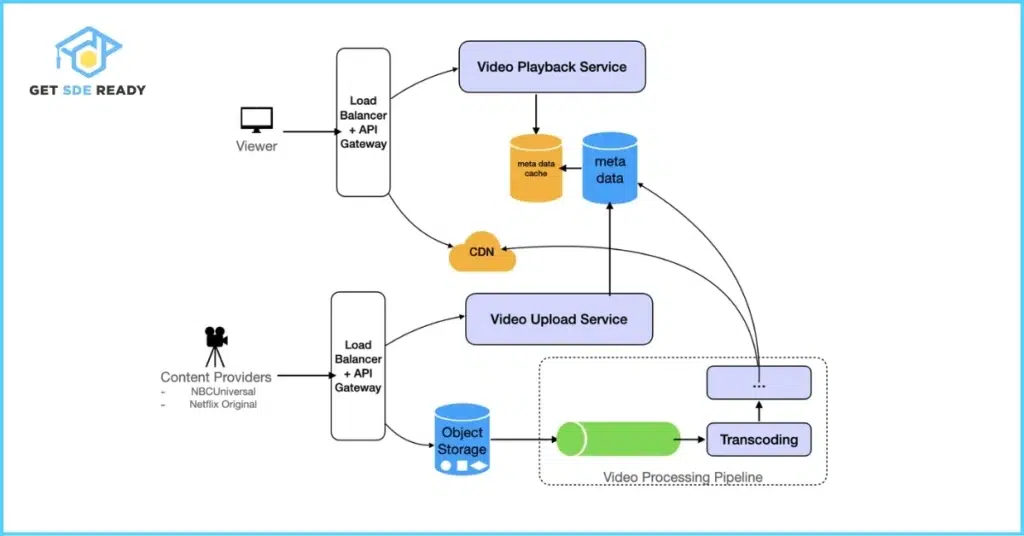
High-Level Architecture
- Clients: Mobile/web apps connect via APIs.
- Backend: Microservices on AWS, using Kafka for event streaming.
- Storage: S3 for videos, Cassandra for metadata.
- CDN: Open Connect for edge caching.
Deep Dive into Components
- Recommendation Engine: Uses ML models on user data for 80% of views. Hybrid collaborative + content-based filtering.
- Streaming: HLS/DASH protocols for adaptive bitrate.
- Scalability: Auto-scaling with Kubernetes; sharding databases.
For web development aspects like the frontend UI, explore our web development course.
Case Study 2: Designing Uber
Uber facilitates 3 billion trips quarterly in 2025, with 150 million monthly users. Its design emphasizes real-time matching and location services.
Key Requirements and Stats
- Users: 150 million monthly active users, $43.9 billion revenue in 2024.
- Scale: Handles 50k concurrent requests, millions of GPS pings.
- Functional: Ride request, matching, ETA calculation, payments.
- Non-Functional: Real-time (<5s latency), high availability.
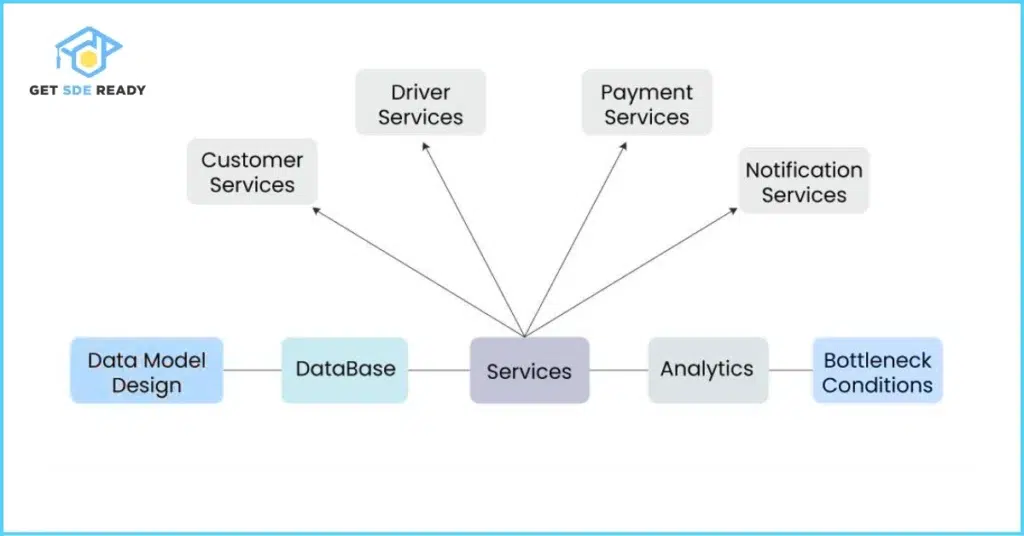
High-Level Architecture
- Clients: Apps use WebSockets for real-time updates.
- Backend: Microservices with Node.js/Python; QuadTree for geospatial indexing.
- Storage: PostgreSQL for trips, Redis for caching locations.
- Messaging: Kafka for events like ride updates.
Deep Dive into Components
- Matching: Use geospatial queries to find nearest drivers; surge pricing via ML.
- Payments: Integrate Stripe; handle concurrency with transactions.
- Scalability: Sharding by city; load balancers for traffic.
If data science intrigues you for features like surge prediction, check our data science course.
Case Study 3: Designing Instagram
With 2 billion monthly active users in 2025, Instagram drives 29% of in-app purchases. Its design focuses on feeds, media upload, and social graphs.
Key Requirements and Stats
- Users: 2 billion MAU, 500 million daily stories.
- Scale: 60 million photos/day, 5430 TB daily storage.
- Functional: Post media, follow, like, search, feed.
- Non-Functional: Low feed latency, eventual consistency.
High-Level Architecture
- Clients: React Native apps; GraphQL APIs.
- Backend: Django/Python microservices.
- Storage: S3 for media, PostgreSQL + Cassandra for metadata.
- Feed: Fan-out on write for small users, pull for celebrities.
Deep Dive into Components
- Feed Generation: Hybrid push/pull; cache with Redis.
- Search: Elasticsearch for hashtags/locations.
- Scalability: Sharding by user ID; CDNs for media.
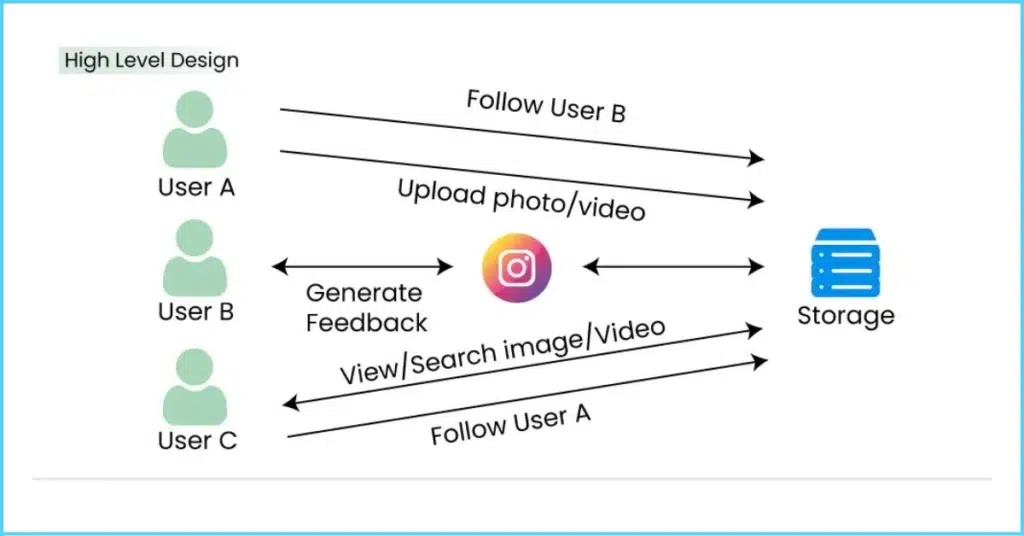
Master these with our all-in-one master DSA, web dev, and system design course.
30+ Real Interview Questions and In-Depth Answers
Based on real questions from FAANG interviews (sourced from LeetCode, Reddit, and expert sites), here are 35 in-depth questions with answers. I’ve categorized them by app for clarity. These go beyond basics, incorporating trade-offs and optimizations.
Netflix-Related Questions (12)
- Design a scalable CDN like Netflix’s Open Connect.
Answer: Use hierarchical OCAs (central, regional, edge). Cache with LRU/LFU; auto-scale via Kubernetes. Trade-off: Cost vs. latency—edge servers reduce delay but increase expenses. Handles 95B hours of viewing. - Design a fault-tolerant streaming service.
Answer: Replicate across regions with Cassandra/DynamoDB. Use load balancers and heartbeats for failover. Adaptive streaming (HLS) for resilience. Trade-off: Strong consistency vs. availability—opt for eventual via caching. - Design a personalized recommendation system.
Answer: Collect data via Kafka; use collaborative filtering + ML (matrix factorization). Scale with Spark; personalize 80% of views. Trade-off: Real-time vs. batch—hybrid for accuracy. - Design a low-latency streaming service.
Answer: Chunk videos; use DASH for bitrate adaptation. CDN precaching based on patterns. Latency budget: <200ms. Trade-off: Quality vs. speed—compress for poor networks. - Design an advanced search with autocomplete.
Answer: Trie for prefixes; Elasticsearch for ranking. Personalize via user history. Scale with sharding. Trade-off: Freshness vs. cost—daily indexing. - Design a video streaming service like Netflix.
Answer: Encode videos in multiple formats; use CDNs. Handle 280M users with microservices. Trade-off: Storage vs. quality—transcode on-demand. - Design a scalable metadata storage system.
Answer: Cassandra for NoSQL; index with Elasticsearch. Replicate for HA. Trade-off: Read speed vs. write—use eventual consistency. - Design a real-time analytics system.
Answer: Ingest with Kafka; process via Spark. Dashboards with Grafana. Trade-off: Real-time vs. accuracy—sample data. - Design a scalable logging and monitoring system.
Answer: ELK stack (Elasticsearch, Logstash, Kibana). Alert with Prometheus. Scale distributed. Trade-off: Retention vs. cost—tiered storage. - Design a high-availability distributed database.
Answer: Use CockroachDB for SQL with replication. Sharding by title. Trade-off: CAP—prioritize AP for global access. - Design a global load balancing system.
Answer: Anycast DNS; GSLB for geo-routing. Failover with health checks. Trade-off: Latency vs. cost—multi-cloud. - Design a user profile management system.
Answer: Store in DynamoDB; sync via Kafka. Privacy with GDPR compliance. Trade-off: Security vs. speed—encrypt at rest.
Uber-Related Questions (12)
- Design a ride-sharing system like Uber.
Answer: Geospatial indexing (S2/QuadTree) for matching. WebSockets for real-time. Handle 3B trips/Q. Trade-off: Accuracy vs. speed—approximate nearest. - Design a real-time location-tracking system.
Answer: GPS pings to Kafka; store in Redis. Query with Elasticsearch Geo. Trade-off: Battery vs. precision—sample every 10s. - Design a notification system.
Answer: FCM for push; Kafka queue. Handle failures with retries. Trade-off: Delivery vs. spam—rate limit. - Design a payment system.
Answer: Stripe integration; ACID with PostgreSQL. Fraud ML. Trade-off: Security vs. speed—async processing. - Design a distributed logging system.
Answer: Fluentd collectors; store in S3. Query with Athena. Trade-off: Volume vs. cost—compress logs. - Design a system for surge pricing.
Answer: ML on supply/demand; update via Redis pub/sub. Trade-off: Fairness vs. revenue—cap surges. - Design a scalable logging and monitoring system.
Answer: Prometheus + Grafana; logs to ELK. Auto-alerts. Trade-off: Granularity vs. overhead—sample metrics. - How would you handle distributed transactions in Uber?
Answer: SAGAs for microservices; eventual consistency. Trade-off: Speed vs. atomicity—compensating actions. - Design ETA calculation.
Answer: Graph algorithms (Dijkstra) on maps; ML for traffic. Cache routes. Trade-off: Real-time vs. compute—precompute grids. - Design driver matching with constraints.
Answer: Filter by rating/vehicle; optimize with Hungarian algorithm. Trade-off: Wait time vs. quality—thresholds. - Handle scalability for 50k concurrent users.
Answer: Auto-scale EC2; shard by city. Trade-off: Cost vs. peaks—predictive scaling. - Design fraud detection in payments.
Answer: Anomaly ML on transactions; rules engine. Trade-off: False positives vs. losses—tune thresholds.
Instagram-Related Questions (11)
- Design Instagram’s feed generation.
Answer: Fan-out for small users; pull for influencers. Cache in Redis. Handle 500M DAU. Trade-off: Write heavy vs. read—hybrid. - Design photo/video upload service.
Answer: S3 storage; transcode with FFmpeg. Chunk large files. Trade-off: Quality vs. size—compress. - Design search with hashtags/locations.
Answer: Elasticsearch inverted index. Geo-sharding. Trade-off: Relevance vs. speed—BM25 ranking. - Design like/comment system.
Answer: Counters in Cassandra; notifications via Kafka. Trade-off: Consistency vs. scale—eventual. - Design follow/unfollow mechanism.
Answer: Graph DB (Neo4j) for social graph. Update feeds async. Trade-off: Immediate vs. delayed—queue jobs. - Handle 60M daily uploads.
Answer: Distributed queues; shard storage. Trade-off: Durability vs. speed—replicate. - Design stories feature.
Answer: Ephemeral storage; TTL in Redis. Push to followers. Trade-off: Privacy vs. virality—view tracking. - Design Instagram overall.
Answer: Microservices; GraphQL federation. Scale to 2B users. Trade-off: Monolith simplicity vs. modularity. - Optimize for low latency feeds.
Answer: Precompute feeds; CDN for media. Trade-off: Freshness vs. load—poll periodically. - Design analytics for engagement.
Answer: Kafka streams; store in BigQuery. Trade-off: Real-time vs. batch—hybrid. - Handle multi-tenant privacy.
Answer: Row-level security in DB; encrypt data. Trade-off: Access speed vs. compliance—audit logs.
These questions are drawn from real interviews at Meta, Google, and Netflix, emphasizing depth.
Tips for Acing Your Interview
- Practice with mocks; use frameworks like RADIO (Requirements, API, Data, Infrastructure, Optimization).
- Ask clarifying questions: “What’s the QPS? Any geo-constraints?”
- Draw diagrams; explain trade-offs verbally.
- For quick prep, join our crash course.
As one Reddit user shared, “System design is easy: Understand databases, optimizations, and practice with ChatGPT.” Stay curious—practice builds confidence.
In conclusion, designing these apps teaches scalable thinking. Apply these insights, and you’ll shine. Ready to practice? Dive into our resources today.
FAQs
What are common system design interview questions for Netflix?
Focus on scalable CDNs, recommendation engines, and fault-tolerant streaming for video platforms.
How to prepare for Uber system design interviews?
Study ride-matching, real-time tracking, and geospatial indexing with trade-offs like latency vs. accuracy.
What key components are in Instagram's system design?
Include feed generation, media storage, social graphs, and search with caching for low-latency performance.
Why are trade-offs important in system design?
They balance scalability, cost, and reliability, like choosing eventual consistency for high availability.
How many users does Netflix have in 2025?
Approximately 280 million paid subscribers, handling massive global streaming demands
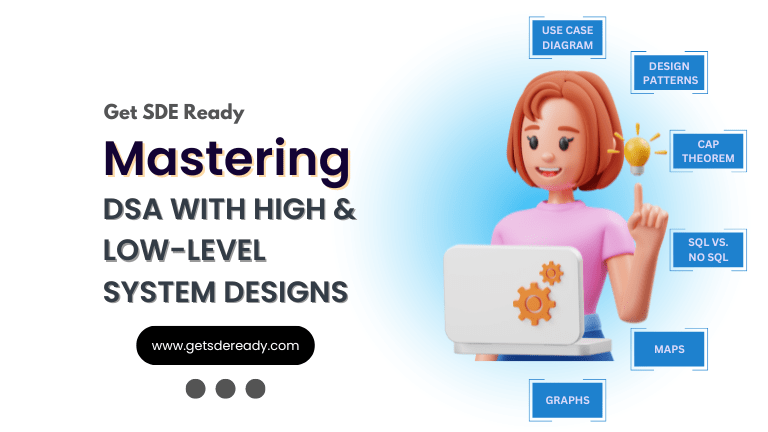
DSA, High & Low Level System Designs
- 85+ Live Classes & Recordings
- 24*7 Live Doubt Support
- 400+ DSA Practice Questions
- Comprehensive Notes
- HackerRank Tests & Quizzes
- Topic-wise Quizzes
- Case Studies
- Access to Global Peer Community
Buy for 52% OFF
₹25,000.00 ₹11,999.00
Accelerate your Path to a Product based Career
Boost your career or get hired at top product-based companies by joining our expertly crafted courses. Gain practical skills and real-world knowledge to help you succeed.
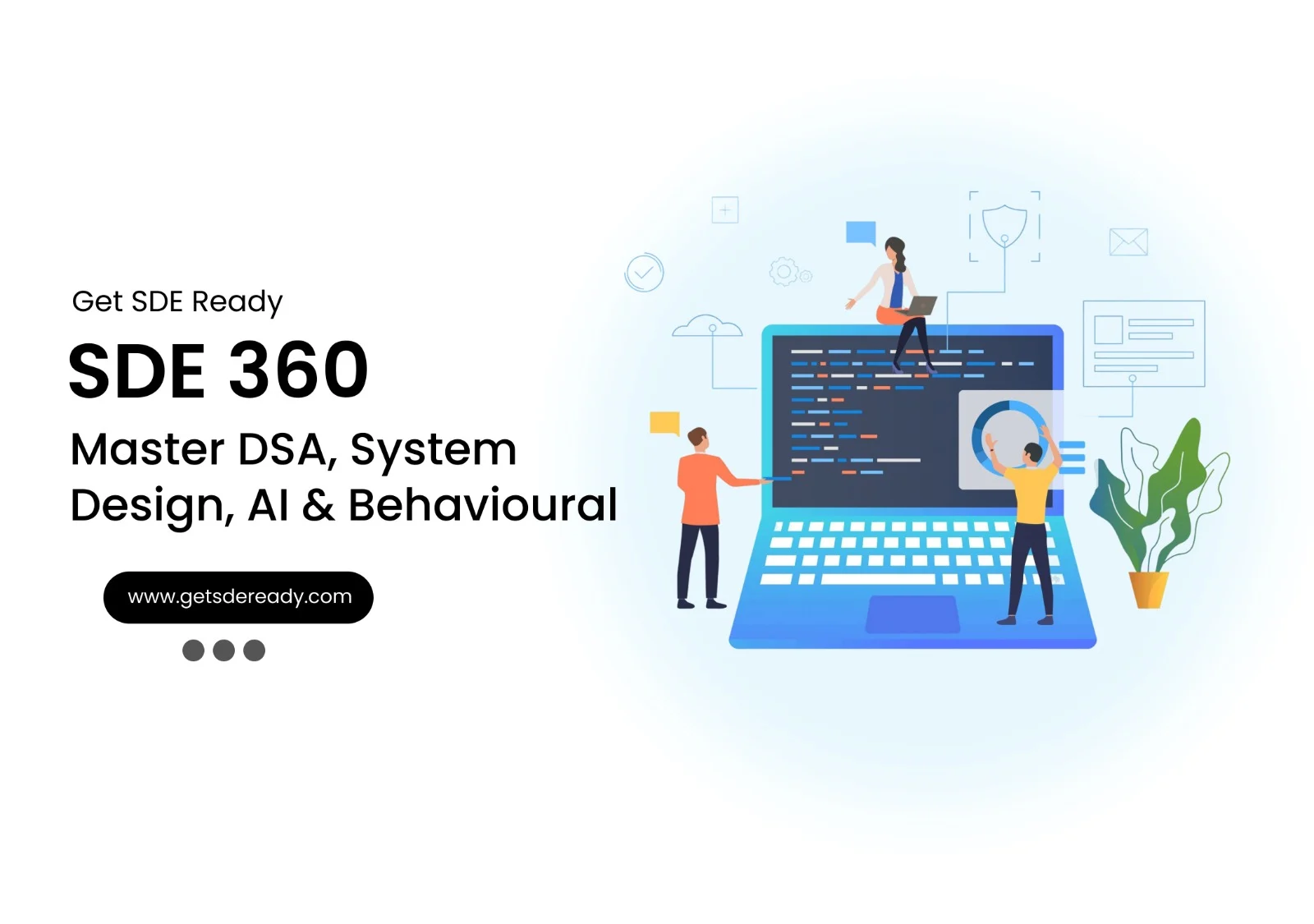
SDE 360: Master DSA, System Design, AI & Behavioural
- 100+ Live Classes & Recordings
- 24*7 Live Doubt Support
- 400+ DSA Practice Questions
- Comprehensive Notes
- HackerRank Tests & Quizzes
- Topic-wise Quizzes
- Case Studies
- Access to Global Peer Community
Buy for 50% OFF
₹39,999.00 ₹19,999.00

DSA, High & Low Level System Designs
- 85+ Live Classes & Recordings
- 24*7 Live Doubt Support
- 400+ DSA Practice Questions
- Comprehensive Notes
- HackerRank Tests & Quizzes
- Topic-wise Quizzes
- Case Studies
- Access to Global Peer Community
Buy for 52% OFF
₹25,000.00 ₹11,999.00
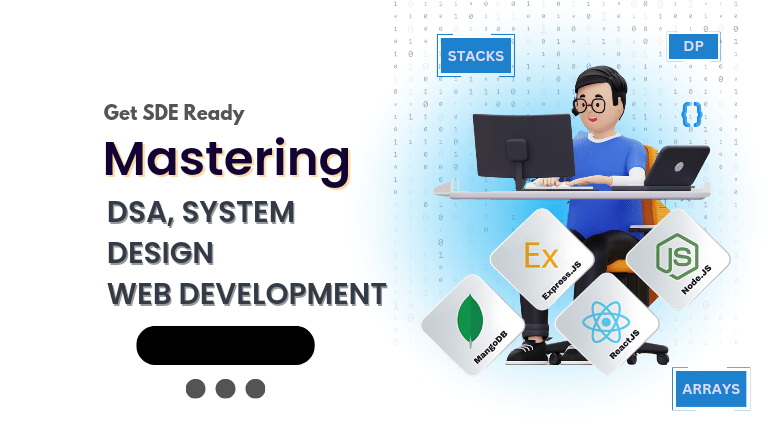
Fast-Track to Full Spectrum Software Engineering
- 120+ Live Classes & Recordings
- 24*7 Live Doubt Support
- 400+ DSA Practice Questions
- Comprehensive Notes
- HackerRank Tests & Quizzes
- 12+ live Projects & Deployments
- Case Studies
- Access to Global Peer Community
Buy for 51% OFF
₹35,000.00 ₹16,999.00
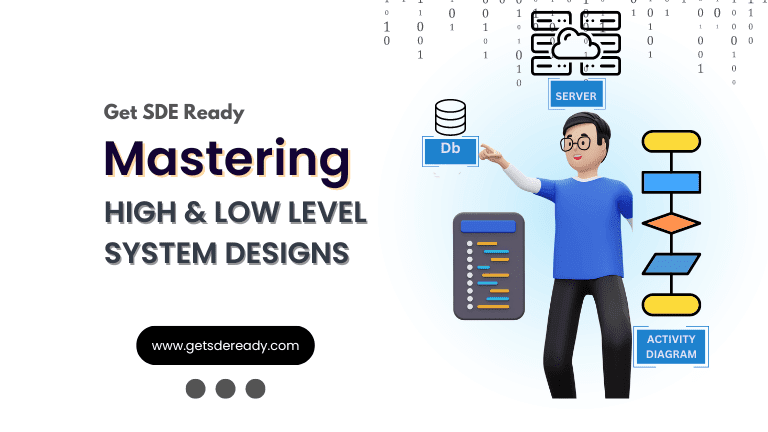
Low & High Level System Design
- 20+ Live Classes & Recordings
- 24*7 Live Doubt Support
- Case Studies
- Comprehensive Notes
- HackerRank Tests
- Topic-wise Quizzes
- Access to Global Peer Community
- Interview Prep Material
Buy for 60% OFF
₹20,000.00 ₹7,999.00
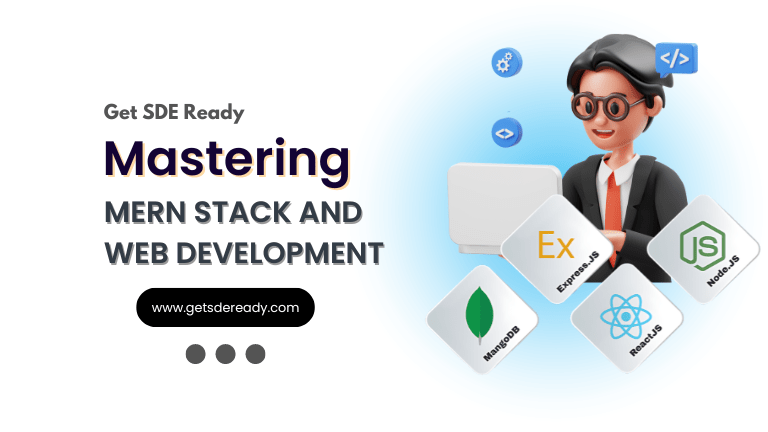
Mastering Mern Stack (WEB DEVELOPMENT)
- 65+ Live Classes & Recordings
- 24*7 Live Doubt Support
- 12+ Hands-on Live Projects & Deployments
- Comprehensive Notes & Quizzes
- Real-world Tools & Technologies
- Access to Global Peer Community
- Interview Prep Material
- Placement Assistance
Buy for 53% OFF
₹15,000.00 ₹6,999.00
Reach Out Now
If you have any queries, please fill out this form. We will surely reach out to you.
Contact Email
Reach us at the following email address.
arun@getsdeready.com
Phone Number
You can reach us by phone as well.
+91-97737 28034
Our Location
Rohini, Sector-3, Delhi-110085
